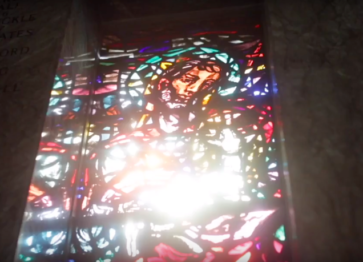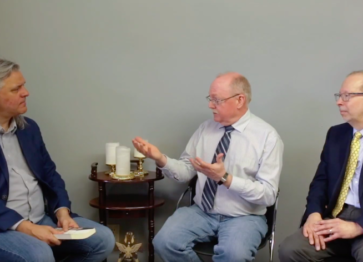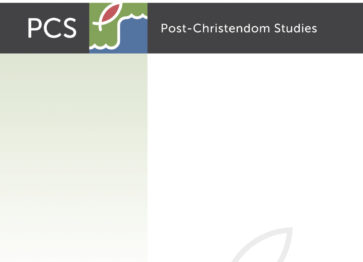A month ago papers reported on the secret code used to communicate the death of Queen Elizabeth II: the code was “London Bridge Is Down.”1 Apparently the British Prime Minister will first be contacted, and then notification will be made to other government officials and heads of state in a clearly outlined order of sequence. Included in those heads of state will be leaders from the other fifteen nations that recognize her as head of state, and the other three dozen nations in the Commonwealth where she has a symbolic role. Then the news will go public.
Fortunately the longest reigning Queen in British history is currently in good health, so hopefully that code will not be used for the foreseeable future. However, at sometime it will be needed.
But what does her death have to do with post-Christendom?
Britain has experienced significant postwar secularization,2 yet institutional arrangements related to the monarchy and its “sacred” roles have not adjusted accordingly. One reason for the slow change is that most people alive in the UK today have never experienced a coronation and its intrinsic religious nature, and thus have not been scandalized by its overtly religious aspects. The Queen’s coronation was 64 years ago (1953), when Britain was a self-identified Christian nation, the British Empire was still a global power, the Soviet Union was flexing its muscle, a gallon of gas at the pumps was 29 cents, and there was no internet, no cell phones, and TV had just begun…you get the idea.
There will probably be no post-Christendom problems related to her funeral. The Queen is a Christian, so it is to be expected that her funeral will be distinctly Christian.3
The problems will revolve around the Christian — specifically Protestant — accession and coronation oaths and ceremony. A recent must-read work by Norman Bonney that highlights these looming problems is the source for these following three inter-related issues.4
First, distinctly Christian oaths are part and parcel of becoming a monarch.
Bonney writes, “The oaths of the accession and of the coronation of the monarchy are the affirmative symbolic acts which legitimate the system of government of the United Kingdom of Great Britain and Northern Ireland (UK) and the place of monarchy at the apex of the political system.” Such oaths are distinctly Christian, and particularly Protestant (and even anti-Catholic). They may evolve over time, but from the sixteenth century onwards they have been exclusively Protestant. In 1953, Queen Elizabeth swore, among other things, to “maintain the Laws of God and the true profession of the Gospel” and “maintain in the United Kingdom the Protestant Reformed Religion established by law.”
Second, the monarch is crowned by the Archbishop of Canterbury.
Those who have watched the made-for-TV series The Crown were made aware of the intersection of religion and the Queen’s coronation.5 Monarchs do not crown themselves, nor do politicians carry out that function. In a tradition that dates back over a millennium, the crown is placed on the head of the monarch by the highest church figure. While a monarch may have experienced the accession months or even years earlier (no church leaders needed for that legal act), no British monarch for centuries has been crowned in a coronation service without the church’s highest clergy being front and center.
Third, the monarch is the “defender of the faith.”
One of the Queen’s titles is the “Defender of the Faith” (fidei defensor). The “faith” in question is the Christian (specifically Protestant) faith. She is the Supreme Governor of the Church of England, and although the role is highly symbolic and ceremonial, she is still responsible for key appointments. She also upholds the constitution of the Church of Scotland (the established church in Scotland).
In an increasingly secular, pluralistic, or multi-faith nation, such an exclusively and overtly Christian (aka Protestant) accession and coronation seems remarkably out of place. But what is the way forward?
H.V. Nelles points out that, in order to form a national consciousness, nations need occasions to bring people together. The instruments of nation-building are items such as flags, anthems, idols and monuments, and events such as the coronation are “acts of self-invention” of a national consciousness.6 Benedict Anderson also sheds some light on the need for nations to have an imagined sense of community and identity. He writes “In fact, all communities larger than primordial villages of face-to-face contact (and perhaps even these) are imagined. Communities are to be distinguished, not by their falsity/genuineness, but by the style in which they are imagined.”7
But in this time of post-Christian transition, it is very difficult to have a shared imagination, and thus national cohesion. Much is unraveling, and the distinctly Christian identity associated with iconic figures such as Queen Elizabeth II do not resonate readily with contemporary sensibilities. The reality is that perhaps the most glaring – and possibly most contentious – evidence of such shifts will be the debates that occur after “London Bridge Is Down” and a new king is crowned.8
Endnotes
1. https://www.theguardian.com/news/audio/2017/mar/20/london-bridge-is-down-the-secret-plan-for-the-days-after-the-queens-death-podcast; http://www.dailymail.co.uk/news/article-4327210/Operation-London-Bridge-Plans-Queen-s-death.html; http://www.independent.co.uk/news/uk/home-news/operation-london-bridge-queen-dead-elizabeth-ii-secret-plan-buckingham-palace-a7632891.html
2. C. G. Brown, The Death of Christian Britain (2nd edition, Abingdon: Routledge, 2009).
3. For commentary on how Christians in Canada responded to Queen Victoria’s death roughly one century ago, see Gordon L. Heath, “‘Were We in the Habit of Deifying Monarchs’: Canadian English Protestants and the Death of Queen Victoria, 1901,” Canadian Evangelical Review (Fall 2005–Spring 2006): 72-97.
4. Norman Bonney, Monarchy, Religion and the State: Civil Religion in the United Kingdom, Canada, Australia and the Commonwealth (Manchester: Manchester University Press, 2013).
5. You can see the actual coronation on YouTube: https://www.youtube.com/watch?v=inKSvLk7kiI. Or you can watch the reenactment on Netflix.
6. H. V. Nelles, The Art of Nation-Building: Pageantry and Spectacle at Quebec’s Tercentenary (Toronto: University of Toronto Press, 1999). “Commemoration as an act of self-invention” is Nelles’ expression.
7. Benedict Anderson, Imagined Communities: Reflections on the Origin and Spread of Nationalism (London/New York: Verso, 1991), 6
8. Note, the issue in this blog is the distinctly Christian identity of the monarch. The monarch’s role in modern governance is a completely different matter.
*The views and opinions expressed in this article are those of the author and do not necessarily reflect the official policy or position of McMaster Divinity College or the Centre for Post-Christendom Studies.*




